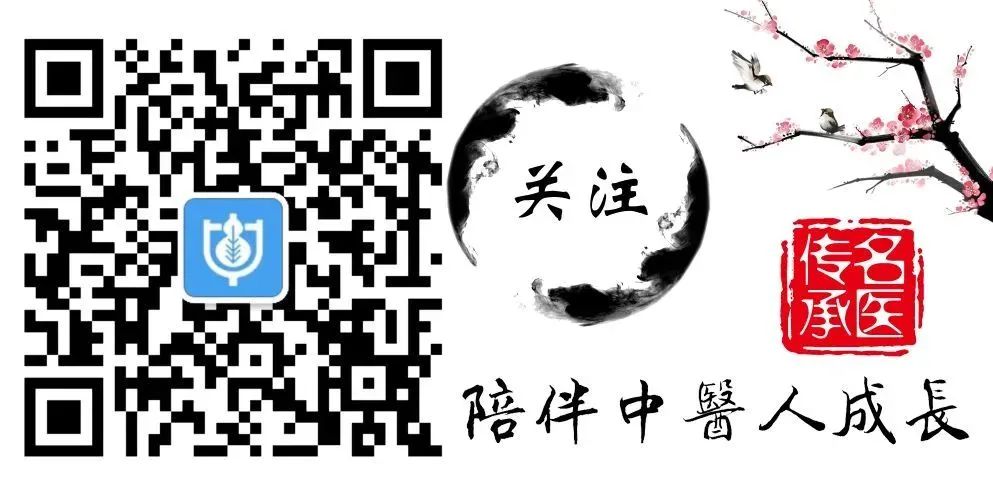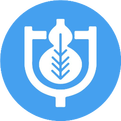Click the blue text above to follow us!

Master of Traditional Chinese Medicine Yang Chunbo is a chief physician at the Second People’s Hospital affiliated with Fujian University of Traditional Chinese Medicine. He has long been engaged in clinical, teaching, and research work on digestive system diseases, with in-depth studies on Spleen and Stomach Damp-Heat Syndrome. Yang Chunbo has introduced the theory of damp-heat from external febrile diseases to internal injuries of the spleen and stomach, organizing and creating a systematic theoretical framework for Spleen and Stomach Damp-Heat, which is widely applied in clinical practice. He shares some key principles in treating Spleen and Stomach Damp-Heat Syndrome here for the benefit of his peers.
Eliminating Damp-Heat Should Start from the San Jiao
Yang Chunbo believes that damp-heat originates in the middle jiao (Spleen and Stomach). Among the five zang and six fu organs, only the Spleen and Stomach are closely related to dampness. Although the damp-heat pathogen arises in the middle jiao, it can ascend and disturb the orifices, leading to symptoms such as blurred vision and tinnitus. For instance, the formula Yi Qi Cong Ming Tang (益气聪明汤) can ascend and disturb the spirit, causing symptoms like dizziness and a feeling of heaviness in the head. Similarly, the Ban Xia Bai Zhu Tian Ma Tang (半夏白术天麻汤) can ascend and affect the lungs, resulting in cough, phlegm, and shortness of breath. It can also descend to the large intestine, causing sticky stools and unsatisfactory bowel movements, as seen in the Xuan Qing Dao Zhuo Tang (宣清导浊汤). It may descend to the bladder, leading to frequent urination, urgency, and pain, or affect the external genitalia, causing conditions like tinea cruris and leukorrhea in women, as seen in formulas like Ba Zheng San (八正散) and Si Miao San (四妙散). Yang Chunbo believes that treatment for damp-heat should differentiate its location in the upper, middle, and lower jiao. For conditions in the upper jiao, where it is lighter, the focus should be on clearing heat and dispelling dampness, combined with aromatic herbs to open the orifices, such as Huo Xiang Ye (藿香叶), Bo He Ye (薄荷叶), and Qing Lou Ye (鲜荷叶). For the middle jiao, the treatment should focus on clearing heat and transforming dampness, while also balancing cold and heat, using herbs like Ban Xia (半夏), Hou Po (厚朴), and Huang Qin (黄芩). For damp-heat in the lower jiao, the focus should be on clearing heat and promoting urination, using herbs like Huang Bai (黄柏), Yi Yi Ren (薏苡仁), and Da Huang (大黄). In addition to the aforementioned treatments for the three jiao, there are also cases where one formula addresses both the upper and middle jiao, as noted in the 9th entry of the “湿热病篇” (Treatise on Damp-Heat Diseases), where symptoms like slight fullness in the abdomen and lack of appetite indicate disturbance in the upper jiao. The 10th entry mentions sweating, chest fullness, and a white tongue coating, indicating dampness in the middle jiao, which also requires treatment for both the upper and middle jiao. Furthermore, for damp-heat that spreads throughout the three jiao, a formula like San Ren Tang (三仁汤) can be used, or a formula that combines clearing, transforming, drying, and draining methods, such as Yang Chunbo’s Qing Hua Yin (清化饮) which includes Yin Chen (茵陈), Bai Bian Dou (白扁豆), and Huang Lian (黄连).
Transforming Damp-Heat Requires Regulating Qi and Unblocking Channels
In summarizing the pathogenic characteristics of damp-heat diseases, Yang Chunbo notes that damp-heat can stagnate qi and obstruct the channels. Recognizing the importance of regulating qi and unblocking channels in damp-heat treatment, he pays special attention to the combination and dosage of qi-regulating and blood-invigorating herbs in clinical prescriptions, as stagnant dampness without qi is like a stagnant pool of water, difficult to stir. By adding a small amount of blood-invigorating herbs to the qi-regulating herbs, stagnation is resolved, qi flows freely, and heat recedes, achieving a synergistic effect.
Distinguishing Between Cold Transformation and Heat Transformation in Damp-Heat
The “Yi Zong Jin Jian” states: “Although the pathogenic qi is the same, it transforms differently based on its location, either transforming from cold, heat, deficiency, or excess, leading to various manifestations.” For damp-heat diseases, differentiation often involves cold and heat transformation. For instance, Xue Shengbai notes in the first entry of the “湿热病篇” that damp-heat diseases predominantly belong to the Yangming and Taiyin channels. If the middle qi is strong, the disease is in the Yangming channel; if the middle qi is weak, the disease belongs to the Taiyin channel. This means that if the patient is robust and Yangming fire is strong, damp-heat is likely to transform into heat, leading to symptoms like dry mouth, bitter taste, yellow tongue coating, constipation, and even fever and thirst. In clinical practice, Yang Chunbo may use Huang Lian (黄连) for its bitter cold properties or Shi Gao (石膏) and Gong Ying (公英) for their sweet cold nature to clear heat. If the transformation is from cold, Yang Chunbo often adds Bai Bian Dou (白扁豆), Chao Bai Zhu (炒白术), and Bai Dou Kou (白豆蔻) to warm the middle and eliminate dampness, ensuring warmth without dryness, and nourishing without stagnation, achieving a balance of treatment.
Clearing Damp-Heat Must Avoid Depleting Qi and Injuring Fluids
The method of clearing heat and transforming dampness is the most common approach for treating Spleen and Stomach Damp-Heat Syndrome. In clinical practice, due to the location and severity of the damp-heat, different herbs are used. For dampness in the upper jiao, aromatic herbs that dispel turbidity, such as Huo Xiang (藿香), Pei Lan (佩兰), and Su Ye (苏叶), are often combined. However, aromatic herbs are inherently drying and can easily injure yin and deplete qi. For dampness in the middle jiao, bitter cold herbs that dry dampness, such as Huang Qin (黄芩), Huang Lian (黄连), and Lian Qiao (连翘), are commonly used, but these bitter cold herbs can also injure yin. For damp-heat in the middle jiao, warming herbs that dry dampness, such as Ban Xia (半夏) and Gan Jiang (干姜), may be used, but warming and drying herbs can easily damage fluids. For damp-heat accumulation in the lower jiao, light draining herbs that promote urination, such as Fu Ling (茯苓), Ze Xie (泽泻), and Yi Yi Ren (薏苡仁), are often used, but these light draining herbs can also injure yin. For patients with heavy dampness and thick tongue coating who do not wish to drink, Yang Chunbo often prescribes herbs that promote urination and generate fluids, such as Lu Gen (芦根) and Tian Hua Fen (天花粉). For those with already injured yin fluids, he may add herbs like Shi Hu (石斛), Yu Zhu (玉竹), and Sha Shen (沙参) to nourish yin and clear heat, while minimizing the use of heavy and cloying herbs like Shu Di Huang (熟地), Tian Dong (天冬), and Shan Yao (山萸肉).
Preventing Damp-Heat Requires Qi Tonification and Spleen Strengthening
The “Su Wen: Ping Re Bing Lun” states: “Wherever evil qi gathers, its qi must be deficient.” The internal cause of Spleen and Stomach Damp-Heat is a weakness of the Spleen and Stomach. With the improvement of living standards, dietary structures have changed significantly, with rich and heavy foods, alcoholic beverages, and spicy foods, along with Western practices of frying, raw foods, and cold drinks, greatly damaging the function of the Spleen and Stomach. A weak Spleen leads to damp accumulation, and a damaged Stomach leads to heat accumulation, resulting in the internal generation of damp-heat. Therefore, preventing the occurrence of damp-heat primarily involves dietary moderation, emphasizing prevention before illness through dietary management. For patients suffering from damp-heat diseases, during the later stages of treatment, once damp-heat is resolved, it is essential to consolidate the recovery and prevent recurrence by focusing on tonifying the Spleen and strengthening the body, as a strong Spleen prevents the generation of dampness.
(Note: The herbal formulas and treatment methods mentioned in this article should be used under the guidance of a physician.)
Note:Please follow medical advice for specific treatments and medications!
Copyright Statement:
-
This article is reproduced from: China Traditional Chinese Medicine News, page 5. Authors: Luo Yunfeng, Ren Yan, Ke Xiao, Chen Jintuan
-
Copyright belongs to the relevant rights holders. If there are any improper uses, please feel free to contact us.
-
This public account shares articles and videos for learning and exchange purposes only. Non-TCM professionals should not attempt to self-medicate.

Great article! Highly recommended for everyone to read.

